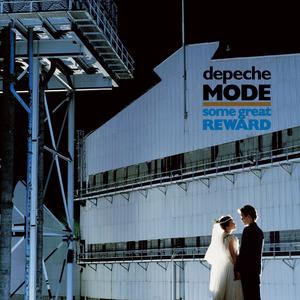Now Playing
Current DJ: Alex Gilbert
Katrina and the Waves Do You Want Crying from Katrina and the Waves (EMI) Add to Collection
Requests? 773-DJ-SONGS or .(JavaScript must be enabled to view this email address)
by Eddie Sayago
There is a chance that you have come across a song (or two, or so many more) that you enjoy and did not realize that it's either been covered by someone else or is a cover itself. We hope that this series allows you to appreciate both the original and the covers they have inspired, and to seek out and enjoy new music in the process.
(Original 1986 version)
(bootleg remix)
By 1986, singer Candi Staton, a working musician since the mid-1950s, was a born-again Christian whose heyday seemed to be behind her (The 1976 single “Young Hearts Run Free” is her most successful song in the U.S). She had left Disco and R&B to record and perform gospel. However, she was approached to record this song for a video about weight loss.
by Eddie Sayago
The mesmerizing lead of a fascinating documentary now airing on HBO, Tina Turner has been captivating audiences for over six decades, performing and recording numerous songs ranging from country and rock to R&B and EDM.
In 2020, Turner collaborated with DJ/producer Kygo on a remix of “What’s Love Got To Do With It?” and has performed covers from many artists including Elton John, Sam Cooke and Al Green.
Here are five artists who pay tribute to the Queen of Rock ‘n’ Roll with these eclectic covers.
Yes, this was originally a Tina Turner song. "Don’t Turn Around” was a B-side for the 1986 single “Typical Male,” written by Albert Hammond and perennial Oscar nominee Diane Warren. Ace of Base’s rendition was the second single from their debut album and peaked at #4 on the Billboard Hot 100 chart. Turner’s “Don’t Turn Around” would appear in the 2018 jukebox musical Tina.
Floatie – Voyage Out (Exploding in Sound)
Fimber Bravo – Lunar Tredd (Moshi Moshi)
by Clarence Ewing
With over 100 years of recorded music available to us, it can be hard to know where to begin listening to the art form’s many variations. This series provides ideas for those interested in exploring unfamiliar genres and styles of music.
What Is It: Popular music whose instrumentation is made up mostly or entirely of electronic synthesizers.
The use of electronic instruments to make music can be traced back as far as the mid-1700s. Synthesizers, the electronic analogue of keyed instruments like pianos, have existed in one form or another since the mid-1950s.
Until the late 1970s, these instruments were on the fringes of music styles like Disco and progressive Rock, played by people who had enough money to buy them.
The 1980s saw the widespread use of synths in pop music, especially by bands inspired by the Punk and New Wave sounds emerging from cities. The inherently bright, chirpy sounds from a keyboard could be used to make happy music, but also deliver lyrics that weren’t so perky. Electronica, experimental pop, and “bedroom pop” (where one person could create their own masterworks using electronic tools) would emerge from the synth taking its place as a common tool in music-making.
For listeners interested in 1980s Synth-Pop but unsure where to begin exploring, these three albums would be good places to start…

Depeche Mode is the most successful band in history that used synths as their primary instruments. Their fourth album contains the international hit “People Are People,” which directly addressed racism and war, along with more risque topics like S&M (“Master and Servant)” suicide (“Blasphemous Rumours”) and the general ennui that comes with working in a capitalist society (“Lie to Me”). It’s a dark album made up of uplifting melodies that could get minimal exposure on the public airwaves.